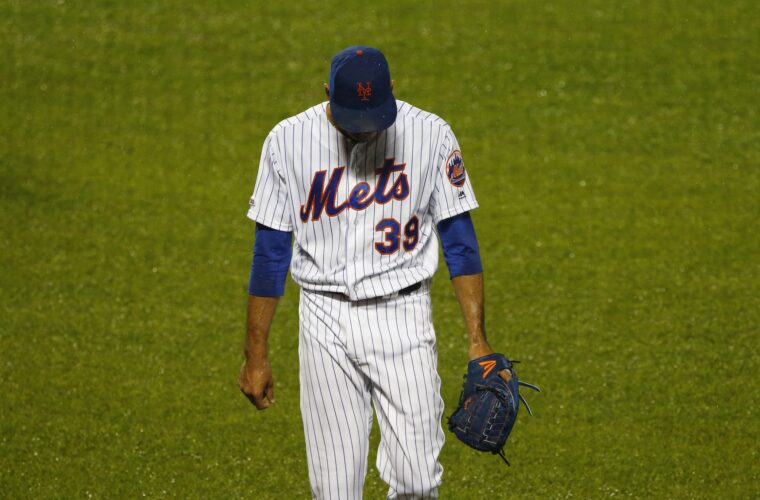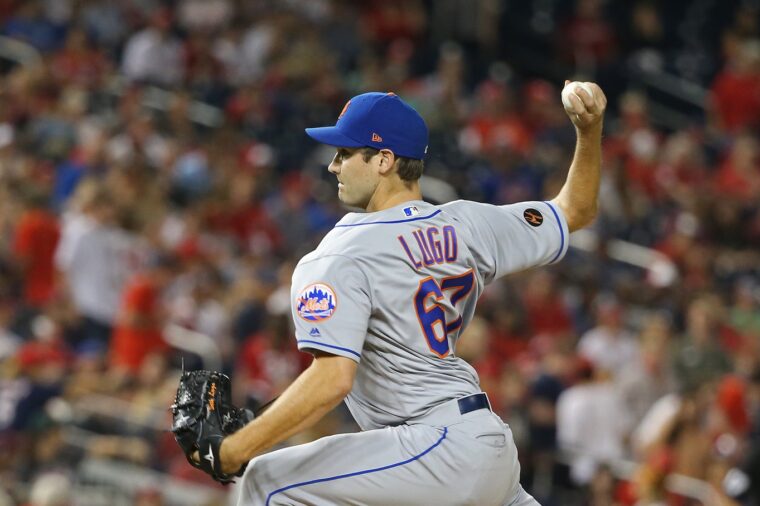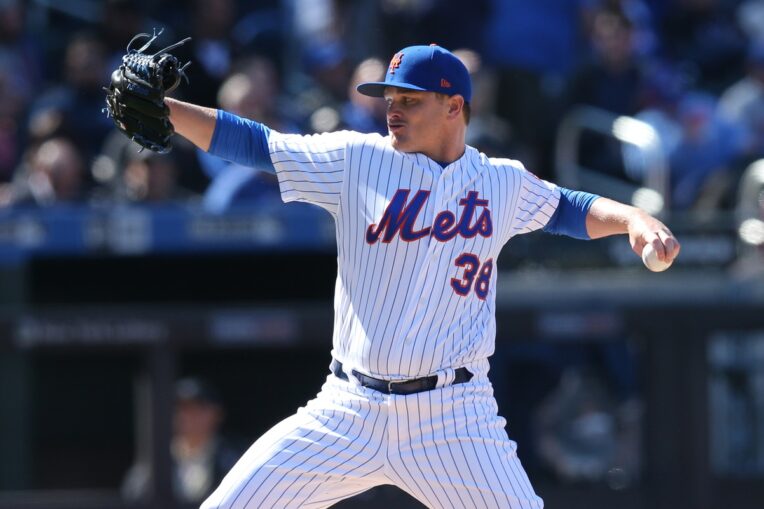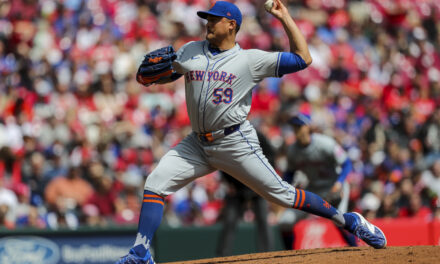
While an argument can be made against the team’s embarrassing defensive effort this year, fans and historians will likely look back on the 2019 season and lament just how frequently the Mets’ bullpen gave away games.
Any encouraging rally from the sixth inning on could be erased in a matter of a dozen, sometimes half a dozen pitches, and every night seemed to bear a new culprit. Even 2017’s bullpen (last in the National League in ERA, WPA, and opponent batting average) had remote staples in Addison Reed and Jerry Blevins. From the “depth” options all the way up to the highly-touted closer, this year’s group has been an abhorrent demonstration of how you can take three steps back as an organization in just three months – and that may be putting it nicely.
Through the first half of 2019, Met relievers have an NL-worst 21 blown saves and .834 opponent OPS. They come out a smidge above the last-place Nationals in WHIP (1.54), ERA (5.63), xFIP (4.97), and WPA (-5.57), but the numbers since May 27 (the first game of a nightmarish west-coast road trip) have been catastrophically worse:
13 losses, a .314 opponent average, a 7.68 ERA, 6.08 FIP, and 1.81 WHIP all rank last in the majors, with groundball and homer rates of 2.26 per nine and 37.3% (respectively) checking in at 29th. Their -6.02 WPA is not only last in baseball, but it is almost double the next-worst figure – a -3.18 owned by the Seattle Mariners.
It almost doesn’t feel appropriate to give even one arm an in-depth look when the unit as a whole has failed this badly. It is important, however, to assess and try diagnosing just what has plagued each reliever, especially given the fanfare around them, like much of the roster, coming into 2019.
***
Edwin Diaz: Easily the most exciting piece brought on this offseason given his upside and years of team control, Edwin Diaz has been at the center of a handful of meltdowns, particularly since the team’s skid began in late-May. It’s worth noting that most rates and predictive stats suggest the closer can put things back together. His 3.38 xFIP over last month and a half is eight runs lower than his ERA, and he still owns the second-most strikeouts per nine innings in the NL (14.7) behind Josh Hader.
The harder box score numbers, however, haven’t as been kind to him this year, as the 5.50 ERA and 1.83 HR/9 will confirm. Diaz has blown as many saves (four) and lost more games to this point (six) relative to the entirety of last year. However high his ceiling remains, Diaz’s first half as a Met goes down as both chaotic and disappointing. Hopefully, a break from the action will help him clear his head.
Grade: D+

Seth Lugo: Much like Diaz in the early going, Lugo was once a far more dependable pitcher. There’s no ignoring the two-month stretch into late-June in which he allowed just one earned run in 23.2 innings while holding opponents to a .148/.207/.235 line. On the whole, however, he’s been nothing more than a sufficient option.
Lugo’s groundball rate (38.2%) has fallen over eight percent and his soft-hit rate (10.9%) over six percent since last year, and he’s struggled getting batters to chase his offspeed pitches as frequently. He’s averaged 5.4 BB/9 and 4.0 HR/9 in his last six appearances, to boot. The righty hasn’t been as agonizing to watch relative to the rest of the cast, but that’s a pretty low bar.
Grade: B-
Robert Gsellman: His 3.51 FIP is the second-lowest among the pitching staff behind Steven Matz, and he’s gained over a full mile per hour on that sinking fastball from last year. Unfortunately for Gsellman, the stuff hasn’t played as consistently as one could’ve hoped, and he’s been perhaps one of the team’s less reliable arms in the clutch. He’s stranded just 63.1% of baserunners, and his .319/.373/.522 opponent line after the seventh inning has confined him to an undefined role to this point in the season. The 8.79 ERA since May 28 hasn’t helped his cause much, either.
Grade: C-
Jeurys Familia: The timing of and circumstances around his Bennett Lesion diagnosis three weeks ago seemed fishy, but it’s pretty much irrelevant given the results of Familia’s first half back in a Mets uniform. He owns a -0.9 bWAR, 7.50 ERA, 5.74 FIP, 1.83 WHIP, and 22 walks in 30 innings.
His -1.74 WPA is the worst in all of baseball, beating out runner-up and apparent Mets trade target Joe Jimenez (-1.48). Save for four scoreless outings to open the 2019 season, Familia’s ERA has never dipped below 5.40. It will take a biblical turnaround this summer for him to salvage a brutal first year in a three-year, $30MM contract.
Grade: F

Justin Wilson: Excluding the re-signing of Familia, Wilson was the only reliever who received a big-league deal from the front office. He’s been dealing with elbow soreness all year, having spent the last two months on the sidelines after the team rushed him off the injured list sans rehab in May. He has allowed one or more runs in only three of those dozen outings, though, and his groundball rate is at a career-best 55.2%.
However, a home-run rate of 1.7 per nine (nearly double his career-worst mark of 0.9 as a Detroit Tiger in 2016) has been concerning. Righties are slashing .269/.367/.500 against him in 30 plate appearances, as well. He certainly hasn’t benefitted the team as desired, but one can only wonder how much is on him.
Grade: C
Luis Avilan: Like his lefty counterpart in Wilson, Luis Avilan has spent most of the year on the injured list after the Mets decided to deploy him as a mop-up man. A one-out lefty specialist through and through who struggled with shoulder troubles all of last season, the 29-year old Avilan performed exactly as one could’ve expected. Opposing hitters slashed .347/.418/.551 while righties (in nearly three times as many trips to the plate as left-handed batters) went 15-for-36. There’s no stock in blaming Avilan, but a 2.00 WHIP also isn’t very good.
Grade: F
Drew Gagnon: An interesting storyline in early May when he put together six scoreless outings in a row, Gagnon crashed down to earth rather quickly. He allowed a dozen runs on five homers in his next seven appearances, throwing just 55% strikes before being demoted shortly after one last implosion in Atlanta. His changeup has potential, and any shred of what he put together early on would serve him well down the line, but as it currently stands, the Mets should give it a lot of thought before they recall Gagnon next.
Grade: D
Wilmer Font: Acquired in mid-May to make a spot start, Font has remained on the Mets roster as a long-man for two months and 31 innings. In that time, he’s allowed eight homers and walked 13, though he also showed some versatility with a decent month of June (2.77 ERA, .152/.250/.370 line). On the whole, a 6.46 FIP and 40% hard-hit rate both explain pretty starkly why Tampa Bay (among several other teams) passed the buck on Font, but given the injuries to Corey Oswalt and continued work with Drew Gagnon in Triple-A Syracuse, he seems a lock to continue eating innings – even if they don’t end very well.
Grade: D
Chris Flexen: Having jumped up a mile and a half per hour with his fastball and managed to hold opposing hitters to a .206 average in his debut season as a reliever, Chris Flexen might stick around soon. He only has 8.2 innings to his name this year, but the 25-year old has made an impression, albeit a mixed one. He’s struck out ten, but also walked nine to drive his xFIP nearly two runs higher than his 5.19 ERA. Control (or lack thereof) is going to determine how many more chances Flexen gets moving forward.

Grade: C-
Best of the Rest: Losing Drew Smith for the season with a torn UCL was bad. Failing to get results out of virtually anybody he had been competing for a bullpen spot with, however, has been far worse. The taxi squad consisting of Tyler Bashlor, Hector Santiago, Daniel Zamora, Paul Sewald, Tim Peterson, Jacob Rhame, Stephen Nogosek, Brooks Pounders, and Ryan O’Rourke has accounted for 29% the bullpen’s 206 total appearances (60 out of 206), and the results have been underwhelming (or par for the course, depending on who you are).
They’re averaging a combined 6.6 K/9 against 5.8 BB/9 while holding together a paltry 29.9% groundball rate. However bottom-of-the-barrel every team may have to go once in a while, you don’t usually anticipate so many names flying through the revolving door and laying eggs one after another.
Among specific issues, Bashlor’s 2.3 HR/9, Pounders’ -2.6 fastball value, Santiago’s 7.94 xFIP, and Peterson’s 0.43 K/BB ratio all stand out. Depth is necessary for any competitive team to make it through a six-month, 162-game season. Six of the above nine pitchers weren’t even brought aboard by general manager Brodie Van Wagenen himself. Only Santiago has been cut loose. There’s a whole second half of baseball left.
Grade: F















